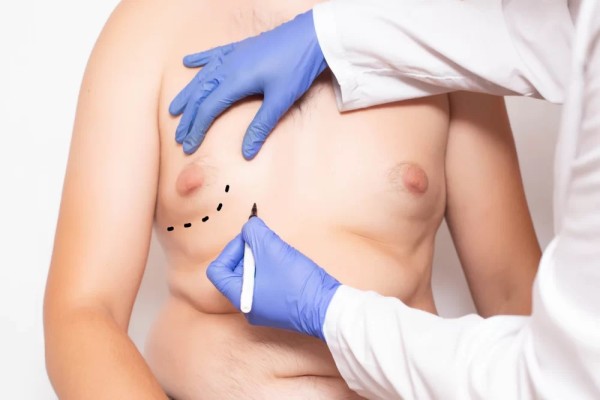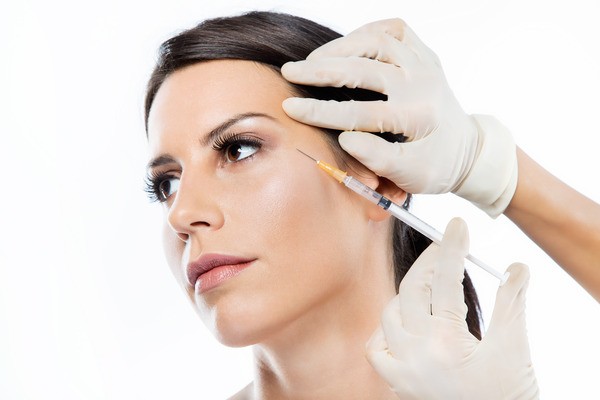
What Is Gynecomastia And What Causes It?
Gynaecomastia is the most frequent male breast tissue. But what is gynecomastia? For men, what causes gynecomastia? Is gynecomastia in men normal?
In this blog, we answer all of your questions related to gynecomastia. We will also tell you which groups of men are at greater risk of gynaecomastia and how they can prevent it.
What is gynecomastia?
In simple terms, gynecomastia means “male breasts.”
It is a medical condition where there is overdevelopment of the breast tissues of a male. As a result, there is swelling of the glandular tissues. This gives rise to the appearance of enlarged breasts in males. One may notice a lump or swelling below the nipple. This is usually movable. They may also experience pain in the nipple.
However, this condition is different from fat deposition around the breast. When fat crystals deposit around the male breast, it is known as “pseudo-gynaecomastia.”
Although both conditions may appear the same externally, there is a considerable difference between the two. The main difference is in the cause. As mentioned above, there is fat accumulation in pseudo-gynaecomastia. In gynecomastia, however, there is excess development and functioning of the breast tissue.
What causes gynecomastia?
Listed below are the causes of male breast development.
1. Hormonal imbalance:
Humans of all sexes secrete both sex hormones in varying degrees. That is, even though you have been taught of testosterone as the “male hormone” and oestrogen as the "female hormone", both males and females release these two hormones. In males, testosterone levels are higher. In females, the oestrogen level is higher.
A change in the ratio of these two hormones can cause gynecomastia in males. Testosterone prevents male breast growth. So, if the oestrogen level rises above testosterone levels in males, it leads to breast enlargement in them.
2. Side-effects of certain diseases:
The diseases that cause gynecomastia include the following:
1. Metabolic disorders –
Klinefelter’s syndrome
2. Tumours –
Involving the adrenal glands, pituitary gland, or the testes
3. Liver diseases –
Liver failure and liver cirrhosis
4. Kidney diseases –
Kidney failure (persons undergoing dialysis)
5. Thyroid disorders –
Hyperthyroidism
6. Cancer –
Of the lungs, testes, or adrenal gland
7. Infection –
Of the testes
3. Drugs:
Gynaecomastia-causing drugs include:
1. Medications –
The common groups of medicines used for treating the following diseases often cause breast enlargement:
- Stomach ulcers
- Epilepsy
- Male infertility
- Prostate cancer
- Depression and anxiety
- Heart diseases
- Cancer
- HIV/AIDS
2. Illegal substance abuse –
Cannabis, methadone, heroin, and marijuana are gynaecomastia-causing drugs.
4. Alcohol:
Excessive alcohol intake leads to hormonal imbalance. This causes gynecomastia.
5. Obesity:
This is the most common cause of gynecomastia in men. The present sedentary lifestyle contributes to this. Obesity causes fat deposition around the breasts and promotes hormonal imbalance. The pile-up of fatty tissue around the breasts secretes excess oestrogen hormone. As a result, there is an overgrowth of breast tissue.
6. Improper diet:
An unhealthy diet is an important factor for male breast growth. If the following foods are consumed in excess, they can cause gynecomastia:
- Processed food
- Deep-fried food
- Soya milk
- Dairy products
- Beetroot
These foods alter the ratio between the two hormones.
7. Synthetic products:
Lotions, creams, or other herbal products that contain lavender oil or tea tree oil cause male breast development. Another important cause is anabolic steroids. These are present in protein supplements used for building muscle mass.
8. Trauma:
Physical trauma to the breasts may trigger the growth of breasts in males in rare cases.
Who is at high risk for gynecomastia?
The following age groups are at a higher risk of suffering from gynecomastia:
1. Pubertal age group:
70% of boys develop male breasts in early and mid-puberty. That is, boys aged between 10-12 years or 13-14 years are at a higher risk.
2. Late age group:
60% of men aged 40 years and more develop gynecomastia.
Is gynecomastia in men normal?
NOT! But, gynaecomastia is normal in the following cases:
1. In newborn males:
In newborn males, the oestrogen hormone of the mother is present. The hormone passes from the mother to the baby through the placenta during delivery. Hence, “breast buds” develop. These usually last for about 6 months after which they disappear. In some infants, they may last longer.
2. Boys undergoing puberty:
Boys within the age group 10-14 often develop bigger breasts. This is due to the effect of hormonal imbalance. It usually resolves on its own, lasting between 6 months and 2 years. However, if it lasts for more than 2 years, consult your general practitioner.
Is gynecomastia a serious problem?
The misconception regarding gynecomastia is that it causes breast cancer. Gynaecomastia does not cause breast cancer. However, it causes significant discomfort in some individuals, especially in public.
Those who develop gynecomastia as a side effect will notice an improvement by
- Switching the medication causes it
- Treating the underlying disease
- Maintaining a healthy diet and lifestyle
However, if the condition progresses to a severe stage, surgery is the only option. For a correct evaluation, contact Dr V. S. Rathore. He is a renowned male breast surgeon in Kolkata. Dr Rathore has 18 years of experience in the field of cosmetic surgery. He ensures accurate diagnosis and treatment for correcting the condition.
Also Read: A Few Known Gynecomastia Facts
Follow us at
Facebook | Instagram | Twitter | Youtube







